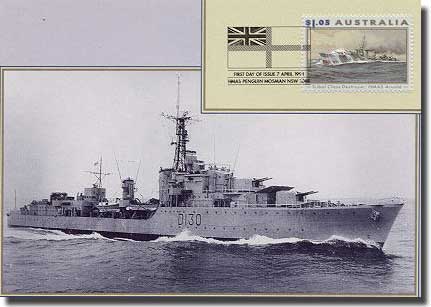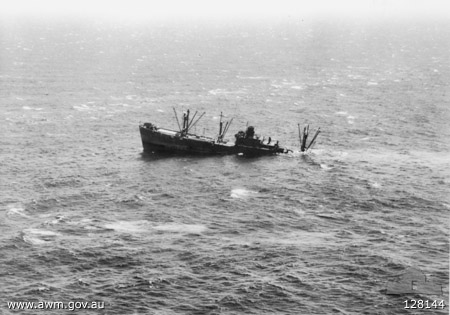|
Enemy Submarine Activity off the Australian Coast in WW2
Presented to The Naval Historical Society of Australia ( Victorian Chapter ) on Monday April 23rd. 2007. Ladies and Gentlemen, thank you for your welcome. Introduction. On a personal note, I had been at sea in the North Atlantic in HMAS Australia from just after Dunkirk in 1940 for about a year, my ship was in Colombo on her way home, I had been promoted to Acting Sub-Lieutenant, and off I went back to UK for my courses in Royal Navy Schools, to qualify in Torpedoes, Gunnery, Signals, and Navigation. The RN had taken over the rather toffy Girl's School RODEAN in Brighton for its Torpedo training school, forced out of Portsmouth by German bombing raids. When we moved in for our classes, we found notices in some rooms which read " Should you need a Mistress during the night please ring." I assure you we rang long and hard, but alas, no response. It has passed into Naval lore that before the Navy moved into the school the Captain insisted that all of the female students should leave, it was rumoured that some of the 6th. formers were still in residence. The mistress in charge reportedly replied " My girls will be alright, they've got it up here" tapping her head- to which the Captain answered "Madam it matters not where your girls have it, rest assured my Sailors will find it." But I digress, I travelled to Melbourne in the Blue Star freighter Tuscan Star, flogging across the North Atlantic, then down the East coast of the US to the island of Aruba to bunker there, thence to passage the Panama Canal, an interesting experience. The canal consists of artificially created lakes, channels, and a series of locks, or water-filled chambers, that raise and lower ships through the mountainous terrain of central Panama. Built by the United States from 1904 to 1914, the Panama Canal posed major engineering challenges, such as damming a major river and digging a channel through a mountain ridge. It was the largest and most complex project of this kind ever undertaken at that time, employing tens of thousands of workers and costing $350 million. The canal cuts through the central and most populated region of Panama, and it has been a point of dispute between the governments of Panama and the United States through most of its existence. Under a 1903 treaty, the United States controlled both the waterway and a large section of the surrounding land, known as the Panama Canal Zone, as if they were U.S. territory. Panamanians resented this arrangement and argued that their country was unfairly denied benefits from the canal. Eventually, riots and international pressure led the United States to negotiate two new treaties, which were signed in 1977 and took effect in 1979. The treaties recognized Panama�s ultimate ownership of the canal and all the surrounding lands. More than half of the former Canal Zone came under Panamanian control shortly after the treaties were ratified. Control of the canal was turned over to Panama on December 31, 1999. The long haul across the Pacific followed to arrive in Melbourne on Pearl Harbor Day. I gave a big sigh of relief when the US declared war on Japan, and then Germany and Italy declared war on the United States. I thought, IN THE LONG HAUL, WE ARE GOING TO WIN THIS WAR. The Pacific War. At least 27 of the I submarines made one patrol in Australian waters, and some made two, in total 40 patrols were undertaken around our coastline. For the Japanese, their I Class were considered to be maids of all work, some carried a floatplane, or a midget submarine secured to the casing, they laid mines, sat off enemy ports and collected weather data, they attacked our Merchant Shipping, and were used to bombard shore installations. Later in the war they were in my view ill used, stripped of their weapons, they became mere cargo boats, hauling supplies around the South Pacific. May I leave our main subject for a few minutes, it is relevant to the fact that I am able to be here with you all today. HMAS Canberra. In that battle 1,000 US sailors died, and I was indeed lucky to escape unharmed. USS Canberra named. Christening on board USS Canberra.
Seeking Canberra's bell in the United States. When visiting the US in the late nineties, with the help of a retired US Naval Captain whom I had known in the Pacific war, we tracked down the bell to a Naval Warehouse in Williamsburg Virginia. On a visit there we viewed it, I asked if I might acquire this bell for Australia, very coldly I was informed " Under US law, foreigners may not own US artifacts." I had run into a brick wall! On to 2001. The Australian Embassy in Washington calls. Yes we could and we did.
Monday September 10, 2001, a day before the infamous 9/11. Both the President and the Prime Minister graciously mentioned me in their speeches, and we had been briefed not to expect to meet the US President. As the ceremony ended, the President spoke to the Admiral in charge of the Navy Yard, then strode from the dais with John Howard in his wake. Denise said " He is coming down to meet you!" and rushed off to one side with our camera to get a record of this historic event. The President arrived with hand outstretched to say " Its a privilege to meet you Sir." I stammered a response, then the President rushed off after Denise, taking her by the arm saying " Come on, you must be in this too." He took the camera from her, handed it to a three star Marine General , wagged a finger at him and said " Take a photograph." Thus we had a record, our historic photograph, Our Prime Minister, the US President
Chatting with John Howard, the next day he said he was off to Arlington Cemetery to visit the gravesite of the one Australian Serviceman buried there, and he invited Denise and I to join him, we were pleased to accept. Pilot Officer Francis Milne RAAF.
Tuesday September 11th. 2001. Naturally the visit to Arlington with the PM was cancelled, and we were stuck in Washington as all aircraft flights in the US were cancelled. Luncheon on Wednesday September 12th. The Prime Minister had thus saved our lives, all rather scary, I was later able to say " THANK YOU " to him for his action, and he responded " Yes our Embassy told me about that." We had to wait until the following Saturday to be able to fly out of Washington, and on an American Airlines Flight to Los Angeles, thence home with Qantas. We were delighted to be safely back in Australia. Its better I believe TO BE LUCKY THAN RICH. Thank you for your tolerence, but you can now understand how I am able to be here to talk to you today. Now back to our main topic. Australia under Seige. Their scout float planes flew over Melbourne, Hobart and Sydney, and Newcastle and Sydney were both shelled from seawards. Port Gregory, a small settlement on the Western Australian coast was also shelled, perhaps its name had something to do with its relative insignificance. It was on our east coast that the Japanese submarines wreaked the most havoc, 17 ships were sunk including our Hospital ship Centaur, and 268 lives were lost, she was clearly both painted and illuminated as a Hospital ship, but was ruthlessly attacked. Her wreck has never been located.
Torpedo Armament. Both Germany and the United States Navies experienced dreadful problems with their torpedoes not exploding on impact, or running deeper than the depth at which they were set. It took some time for the ordnance departments in both countries to accept a problem existed, and then to fix them. Japanese Wartime Submarine Construction. By contrast, The US lost 52, the British 75, Italy 82, Russia 109, and the German Navy, an incredible number of up to 785. You may find higher figures quoted for both Italy and Japan, but when I was writing my " Underwater Warfare. The Struggle Against the Submarine Menace 1939-1945. " I corresponded with the Italian Defence Department in Rome, and also with the Japanese Naval Attache in Australia, and the figures I have used above relate to their response. The Midget Submarine. These Midgets were to be clamped to the deck of an I Class boat, and five such Midgets were used in the December 1941 attack on Peral Harbor, but all failed in that mission. Mine laying off Australia. Despite this major mine laying effort, I am not aware of any reported victims. Three of these four Japanese Submarines were involved in attacks on our shipping, and I-124 was sunk off Darwin on January 20th. 1942. Our corvettes Deloraine, Lithgow, Katoomba and the US destroyer Edsall were all involved in her demise. Darwin attacked from the Air. On February 19th. Darwin suffered the first of many air raids from Japanese bombers, they sank USS Peary and several merchant ships in the harbour, the Hospital Ship Manunda survived this attack. Broome was also attacked from the air early in March, war had indeed come to mainland Australia. Japanese forces sweep South. I-25 with her float plane sailed from her base in mid Pacific on February 5th, bound for our east coast, her CO, Lieutenant Commander Tagami ordered to reconnoitre Sydney, Melbourne and Hobart, and to report by radio any shipping concentrations in those ports. By February 14th, he was off Sydney and he sailed some 100 miles South East to launch the float plane early on the morning of Tuesday the 17th, the pilot, Warrant officer Nobuo Fujita. In Sydney at the Liberty Theatre, the major film attraction was Greer Garson starring in BLOSSOMS IN THE DUST.
Whilst Sydney peacefully slept, the float plane flew over the cliffs at La Perouse just as daylight seeped over the eastern horizon. In the Harbour 23 ships were counted, a large warship with three funnels was noted at No 1 Buoy ( that was the County Class heavy cruiser HMAS Canberra, and I was serving in her as a Sub Lieutenant ) nothing stirred. As the sun rose, the float plane now flying at only 50 metres flew back to her mother submarine, and by 0730 ( 7. 30 AM ) had been recovered. I-25 moved South, and now her floatplane flew over both Melbourne and Hobart.
Attacks off Western Australia. The Midget Submarine attack on Sydney Harbour May 31st./June 1st.1942. These countries were: Britain, Italy, Germany, and Japan. The approach to Sydney. Two floatplane carrying submarines, I-22 and I-29 were on their way to reconnoitre Suva and Sydney. I-28 did not make it to Truk, she was sighted on the surface by the US submarine Tautog, enroute from Pearl Harbor to Fremantle in West Australia, two torpedoes despatched the Japanese boat. The other three I Class all with midgets clamped to their decks sailed from Truk for Sydney about May 20th. These Japanese submarines were: I-21 ( carrying a floatplane ) I-22 ( carrying midget No 21 ) I-24 ( carrying Midget A, it was given this designation as this craft was not recovered at the time of the attack, and her number was unknown ) I-27 ( carrying Midget 14 ) finally I-29 ( probably carrying a damaged floatplane. ) On May 30th. at about 0420 ( 4.20 AM ) a single floatplane burning navigation lights flew over Man of War anchorage in Sydney Harbour, then circled USS Chicago secured to No 2 Buoy, I was of course still in HMAS Canberra serving as a watch keeping Sub Lieutenant, we were secured to No 1 Buoy. In due course, an air raid warning was issued, but searches by fighter aircraft turned up nothing, and the incident did not trigger any special defence measures. Post war it was learned that the float plane came from the Japanese submarine I-21, and her pilot, Lieutenant Ito, flew up the harbour at 600 feet, sighted Chicago and four destroyers in the Man of War anchorage, Canberra in Farm Cove, he then flew back to his submarine, but on landing close by in rough water, crashed his aircraft which sank. He and his observer were picked up, and they reported " A Battleship and Cruisers in Harbour."
It would seem most likely that the cruiser USS Chicago, with her quite heavy superstructure was mistakenly reported as a Battleship, but from the pilot's message the die was cast. It was decided to attack the next day, May 312st. 1942. Boom Protection across Sydney Harbour. The single line steel Anti-Torpedo net was supported between piles, the centre portion was complete, but there were still large gaps at both East and West ends, at the Western end unnetted piles were in place. Eight Magnetic Indicator Loops were in place across the sea floor of the Inner and Outer harbour entrances, the Loop produced a signature when a vessel crossed over it. Midget 14, commanded by Lieutenant Kenshi Chuman with Petty Officer Takeschi Ohmori, was the first inward crossing recorded by the Loop system at 2000 ( 8 PM. ) With all the ferry and other traffic passing over the Loops, its significance was not recognised. About 15 minutes later, Mr. J. Cargill, a Maritime Services Board Watchman, reported a suspicious object trapped in the boom net, with his assistant he investigated this object from a skiff which they rowed over to the scene, and he reported to Lieutenant Eyers, an RANVR officer in charge of the patrol boat HMAS Yarroma. Eyers did not close this object fearing it may be a Magnetic Mine, but he sent off a Stoker in a skiff to investigate, and it was 2230 ( 10.30 PM ) an hour and a half later after Cargill first reported his discovery before Eyers reported the object trapped in the Boom net was, in fact A SUBMARINE, then he sought permission to open fire. All quite beyond belief. But Lieutenant Chuman, hopelessly entangled in the net, solved this dilemma for all concerned, he fired demolition charges which both destroyed the Midget Submarine and her crew of two. Meanwhile, Midget A, with Sub Lieutenant Katsushisa Ban, and Petty Officer Marmoru Ashibe, and Midget 21, with Lieutenant Keiu Matsup and Petty Officer Masao Tsuzuku on board, had been ordered to follow Midget 14 at 20 minute intervals. Ban also registered a Loop crossing at 2148 ( 9.48 PM ) and he proceeded up the harbour with USS Chicago as his prime target. At long last some action was forthcoming, the " General Alarm " was ordered at 2227 ( 10.27 PM ) by Rear Admiral Gerald Muirhead-Gould, Royal Navy, the Naval Officer in Charge at Sydney. Ban was having problems with the depth keeping behaviour of his Midget, it kept breaking the surface, and lookouts in Chicago sighted him, but Ban managed to submerge as the cruiser opened fire with a 5 inch gun, but the submarine was too close to hit. The corvettes Geelong and Whyalla alongside the oil Wharf at Garden Island sighted Ban's conning tower, 20mm fire from Geelong, and searchlight searches from both these ships proved abortive. By now, the third Midget was approaching the Anti-Torpedo Net area, but Lieutenant Matsuo was having his problems with the trim of his boat, and he was sighted by the unarmed Patrol Boat Lauriana, then Yandra attacked with a 6 charge pattern of depth charges, after a series of explosions, Midget 21 was not seen again. Flood lighting illuminated the scene nicely, no one had thought to order them to be extinguished up to now, and they silhouetted Chicago very well. Finally these lights went out at 0025 ( 12.25 AM, now June 1st. ) Ban was now in position to sink Chicago, only 800 metres from his juicy target, he should not miss as he set his torpedo to run at a depth of 2.4 metres, Chicago was 170 metres long, with a draft of 7.6 metres, Ban fired, once the torpedo left the tube, the Midget lost stability, it's bow breaking the surface, and Ban took some 2/3 minutes to regain trim. His torpedo veered off course, passing well ahead of Chicago, went under the Dutch Submarine K-9, now under an old Sydney ferry HMAS Kuttabul, berthed alongside Garden Island, and used as a Naval accommodation vessel. The torpedo finished it's run by striking the retaining wall, exploded, lifting Kuttabul high out of the water coming to rest on the bottom, 19 Australian sailors and 2 British sailors died.
Ban now fired his second torpedo at Chicago, but it missed by some 4 metres, and ran aground on the east side of Garden Island without blowing up. By now the harbour was in absolute turmoil, I can recall ships and small boats rushing all about, searchlights seeking a target, guns being fired, and no one really knowing what was going on. Captain Howard Bode of Chicago had been ashore dining with Rear Admiral Muirhead-Gould, hastily returned to his ship, decided he had enough of this chaos within Sydney Harbour, and took his cruiser to sea, obviously unaware that there were 5 I Class Japanese submarines lurking off Sydney Heads, hopefully waiting the return of their victorious Midgets. Back to the Midgets within the harbour. A registered Loop crossing was recorded at 0158 ( 1.58 AM ) and the subsequent analysis showed that this was an outwards crossing, it could well have been registered by Midget A, with Ban making good his escape after his abortive attempts to sink Chicago. Ban and his crew member did not rendevous with their Mother Submarine, they were never found and their actual fate unknown. Early in 1997 there was a report that a metallic object had been located in the ocean off Cronulla, there was much speculation that it may be the remains of Ban's Submarine, but nothing came to pass in this regard. The History of the Royal Australian Navy in WW2 records: " Luck was certainly on the side of the Defender, and was undeserved in the early stages, when inactivity and indecision were manifested." On June 9th, 1942, at 1100 ( 11 AM ) the four bodies of the crewmen from the two Midgets sunk during their attack on Sydney, were cremated at Sydney's Eastern Suburbs Crematorium, accorded full Naval Honours, their ashes returned to Japan. A memorial plaque for those who took part in this daring but unsuccessful raid on our shipping on May 31st./June 1st. was unveiled at Garden Island. Sub Lieutenant Ban's mother made the trip from Japan to be present at that ceremony.
Post attack. Wreck of Japanese Midget Submarine M-24 that attacked Sydney Harbour in 1942, found at last. Now at last, a group of weekend Scuba divers were on the cusp of creating Australian Naval History. They had chanced upon the wreck of an A Type Submarine, now identified as M-24, she rests on the bottom in about 70 metres of water, at Long Reef, a few kilometers off Sydney's northern beaches. This rather motley crew who call themselves " No Frills Divers " have resolved a 64 year mystery of what happened to the daring crew of two, Sub Lieutenant Katsuhisa Ban and Petty Officer Mamoru Ashibe, and their craft. Make up of the group of seven Divers. This " No Frills Divers Group" consists of : Alan Simon, ex Company Director, Phillip Hendrie, retired printer, Anthony Hay, bus driver, David Muir, electrician, David Arnold, plumber and gas fitter, Greg Kearns, mortage broker, and Paul Baggot, builder.
On Sunday, November 12th. 2006, at 0900 ( 9 AM ) this group met at Long Reef beach, north of Sydney, and decided to revisit a place they had noted some months earlier. Their fish finder had picked up something sitting on the bottom some 4 months earlier, but it was too rough to dive on that day. Off they set for the same position guided by their GPS Navigator. This object sat at 70 metres, meaning that the divers would have a scant 12 minutes to investigate the mystery object, before needing to stop in two stages to decompress, thence back up to the surface. Paul said a snagged fishing net covered the object squatting on the bottom when he reached it, but swimming to the rear of it he noted propellors sticking out above the sand. Now the conning tower became obvious, and at the bow the torpedoes tubes were found. Without any doubt, this object was a Midget Submarine, the interior seemed to be full of mud and sand, but overall this find was in a reasonable condition, given it had sat on the ocean floor for some 64 years. This group had now disproved previous theories about this Midget Sub, the 7 divers wish to treat this amazing find as a WAR GRAVE, they have talked to members of the Royal Australian Navy, and now wish to notify the Japanese Government about their Historic find. Ban's brother in Japan. Our 7 divers met with Commander Shane Moore RAN, the Director of the Naval Heritage Centre located on Garden Island, he confirmed that this find is indeed the third and previously missing Midget Submarine M-24, that attacked shipping in Sydney Harbour over the night of May31st./June 1st. back in 1942. Reaction in Japan. Thus the last page closes on a 64 year old mystery that many Naval and ex Naval personnel, including myself thought would never ever be solved. Sub Lieutenant Ban was very unlucky not to bag USS Chicago, and perhaps even my own ship HMAS Canberra that wild night in May back in 1942. Some how the defence of Sydney Harbour muddled through, we were extremely lucky to get away with just HMAS Kuttabul as the only victim, it was still tragic that 21 Sailors died from the attack. We still have the mysterious disappearance of the RAN, WW1 Submarine AE-1, lost off Rabaul in 1914, unresolved. Since writing that paragraph, an Australian Navy Survey vessel may have uncovered the resting place of AE- 1, missing since 1914.
Action on our Coast. I-27 sitting off Gabo Island attacked the freighter Barwon, but this torpedo passed under the ship, then Iron Crown filled with manganese ore from Wyalla and destined for Newcastle was sunk, and only 5 of her crew of 42 survived. Newcastle and Sydney attacked.
I-21 attacked Newcastle but no casualities and litle damage, the end result. Convoys implemented. List of Ships sunk.
The Year of 1943. Between Mallacoota in the South and Bundaberg in the north, these ships were sunk in 1943 by enemy submarines.
By mid June in 1943, the IJN had abandoned submarine operations off the Australian East coast. Operations off Western Australia. One last hurrah by German U-Boat U-862. Then at last homeward bound, Peter Sylvester was sunk SW of Fremantle, the very last ship to be sunk on the Australian Station. Conclusion. 18 ships, of 86,600 tons were sunk off our east coast, and the small Mamutu in northern latitudes, another 25 ships had suffered some damage when attacked, but still survived. 467 had died, and that figure includes those killed when HMAS Kuttabul was destroyed during the Midget attack in 1942. At last the danger from enemy Submarines operating around our coastline was finally over, but it had been a bumpy ride. Thank you all for your patience.
Blair, C. Silent Victory. The US Submarine War Against Japan. Bantam Books, New York, 1976. Dull, P. S. A Battle History of the Japanese Navy. United States Naval Institute. Annapolis. 1978. Gill, G. H. Royal Australian Navy 1942-1945. The Australian War Memorial. Canberra. 1968. Gregory, M. J. Under Water Warfare. The Struggle Against the Submarine Menace. 1939-1945. The Naval Historical Society of Australia Inc. Garden Island. NSW. Reprinted 2002. ------------------ Midshipman's Journal September 1939- February 1941. Hashimoto, M. Sunk, The Story of the Japanese Submarine Fleet. Cassell and Company. London. 1954. Howarth, S. Morning Glory. A History of the Imperial Japanese Navy. Arrow Books. London. 1985. Jenkins, D. Battle Surface. Japan's Submarine War Against Australia 1942-1944. Random House. Milson's Point, NSW. 1992. Milligan, C. S. Australian Hospital Ship Centaur, The Myth of Immunity. Nairama Publications. Hendra Queensland. 1993. Watts, A. J. & Gordon, B. G. The Imperial Japanese Navy. McDonald. London. 1971. |


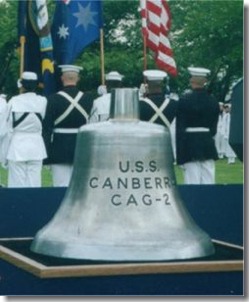
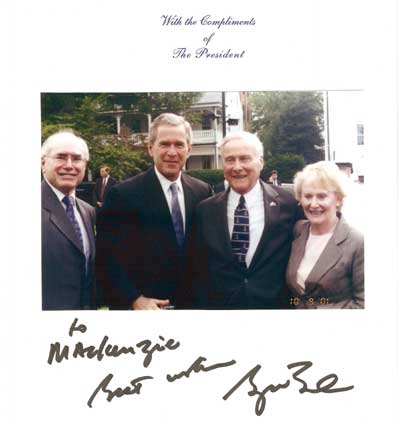

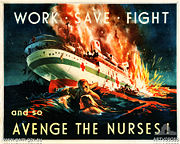
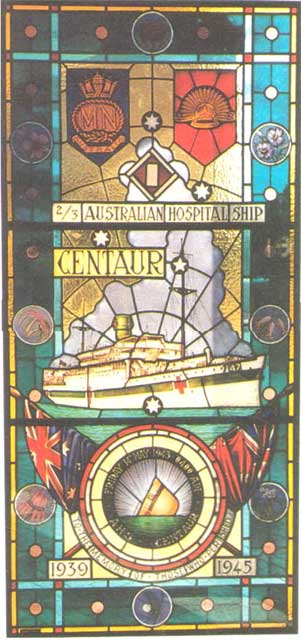

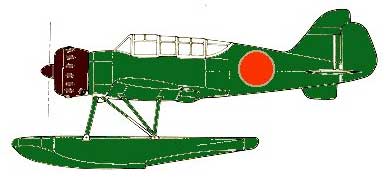


![[Image]](../Images/Midget1.bmp)
![[Image]](../Images/Midget2.bmp)




